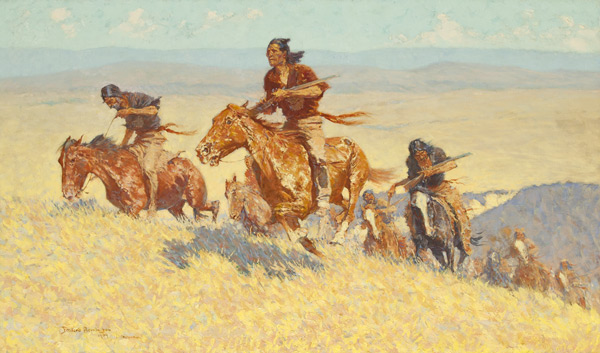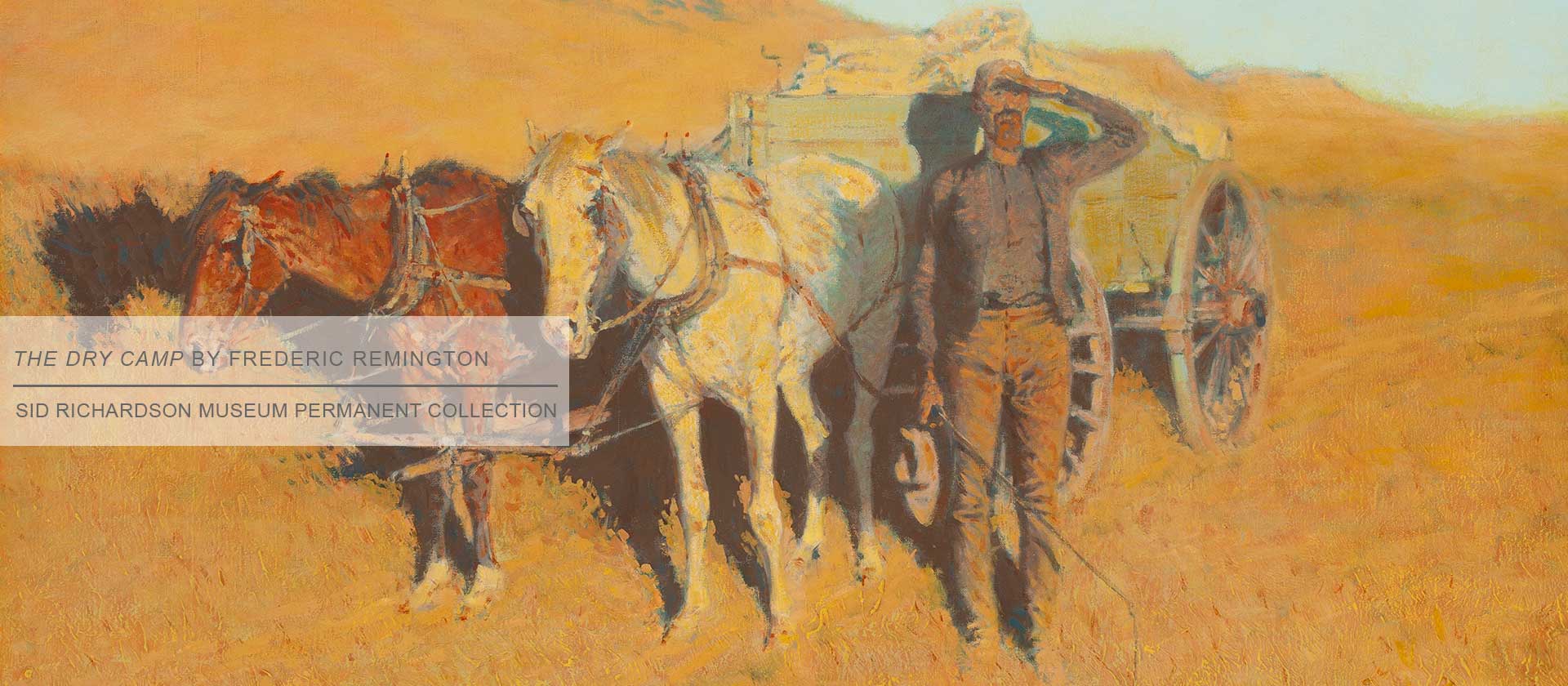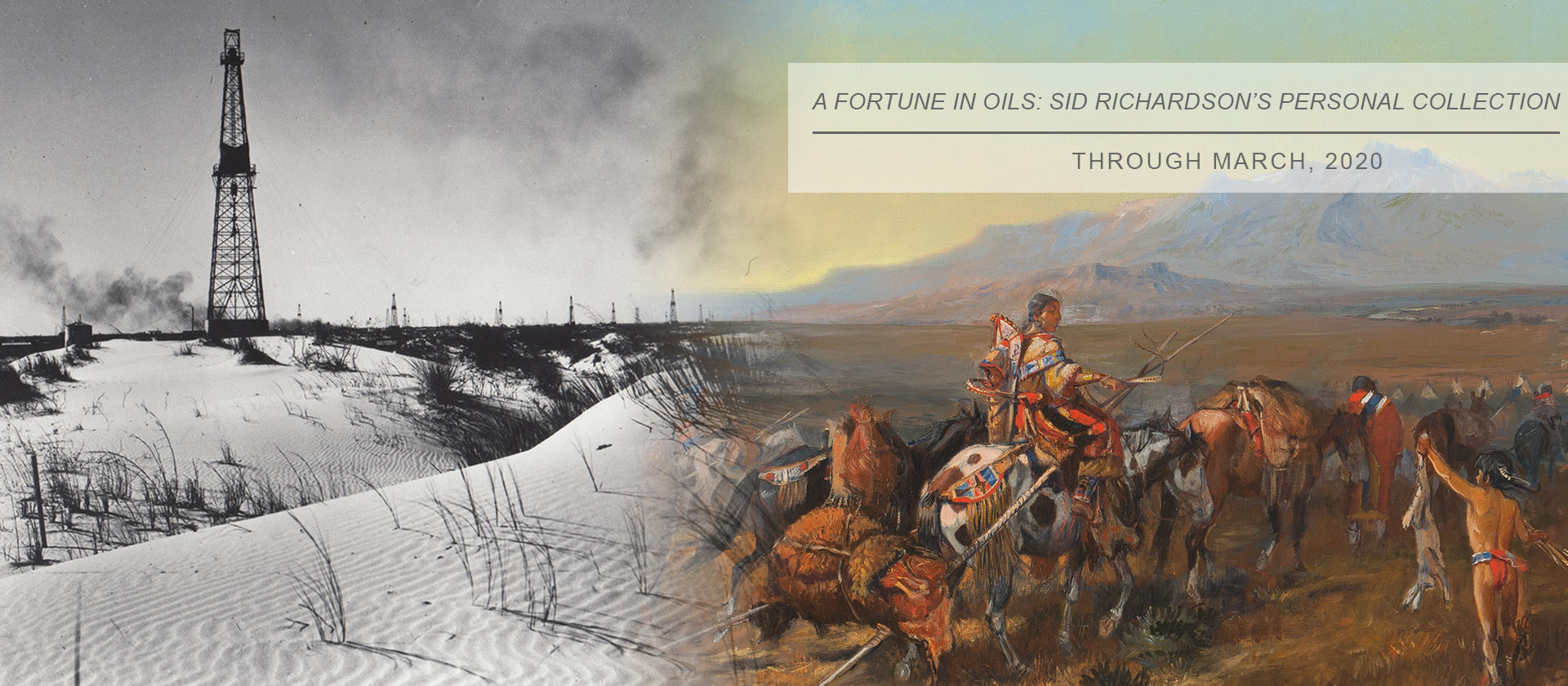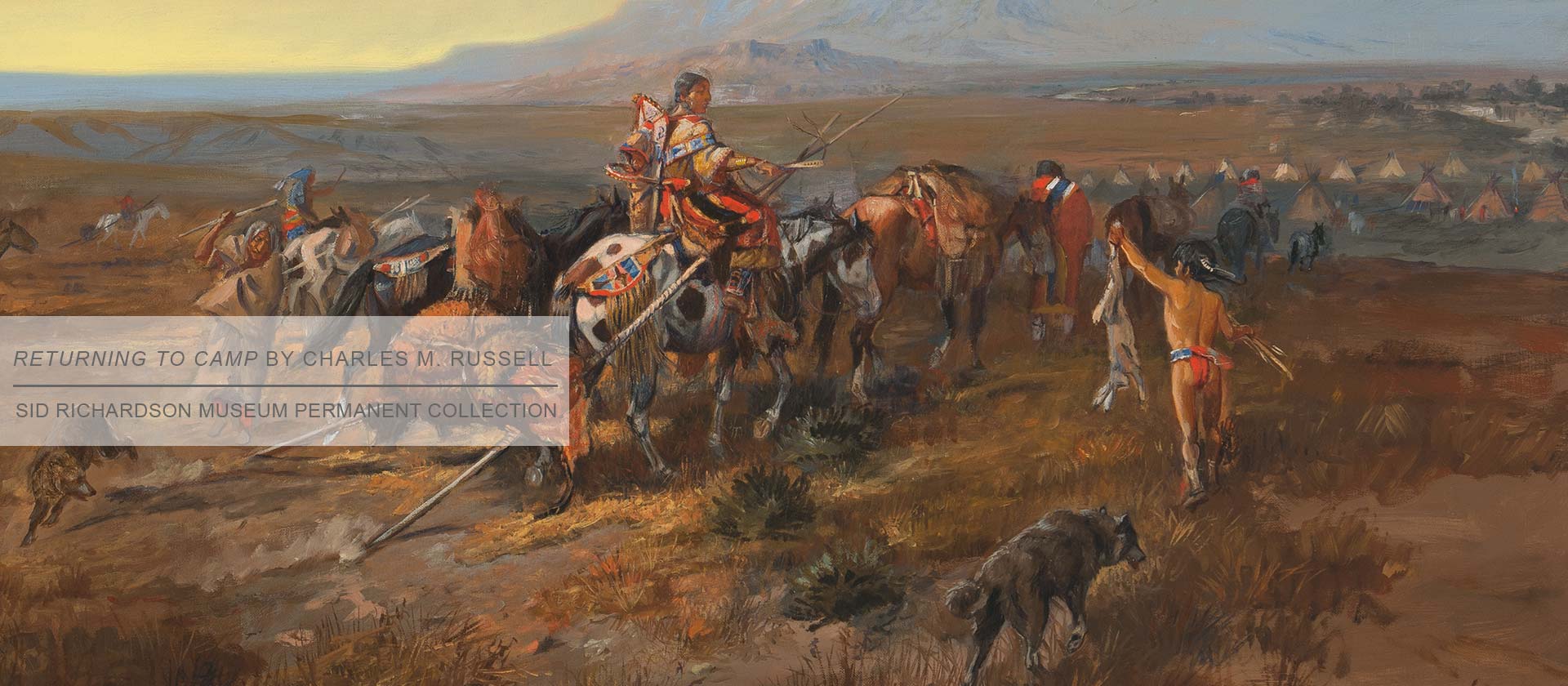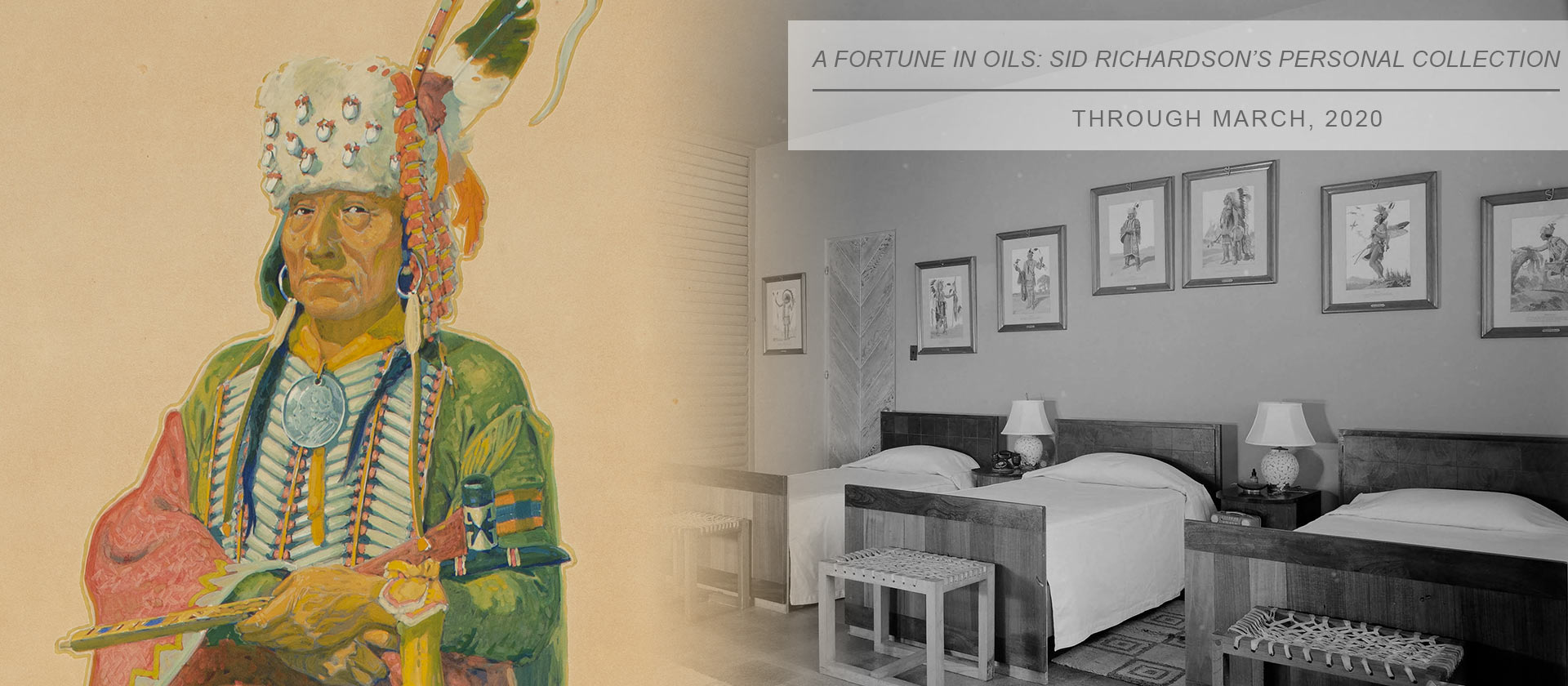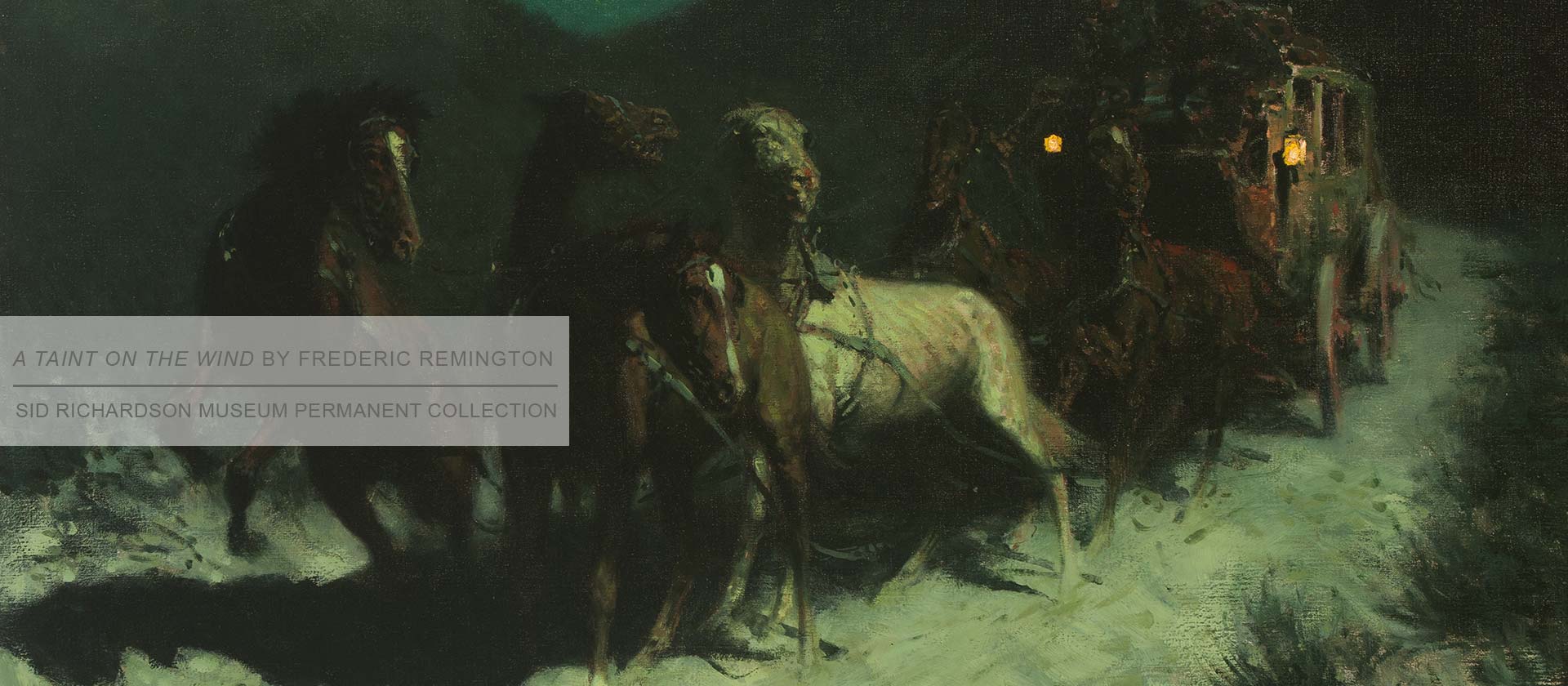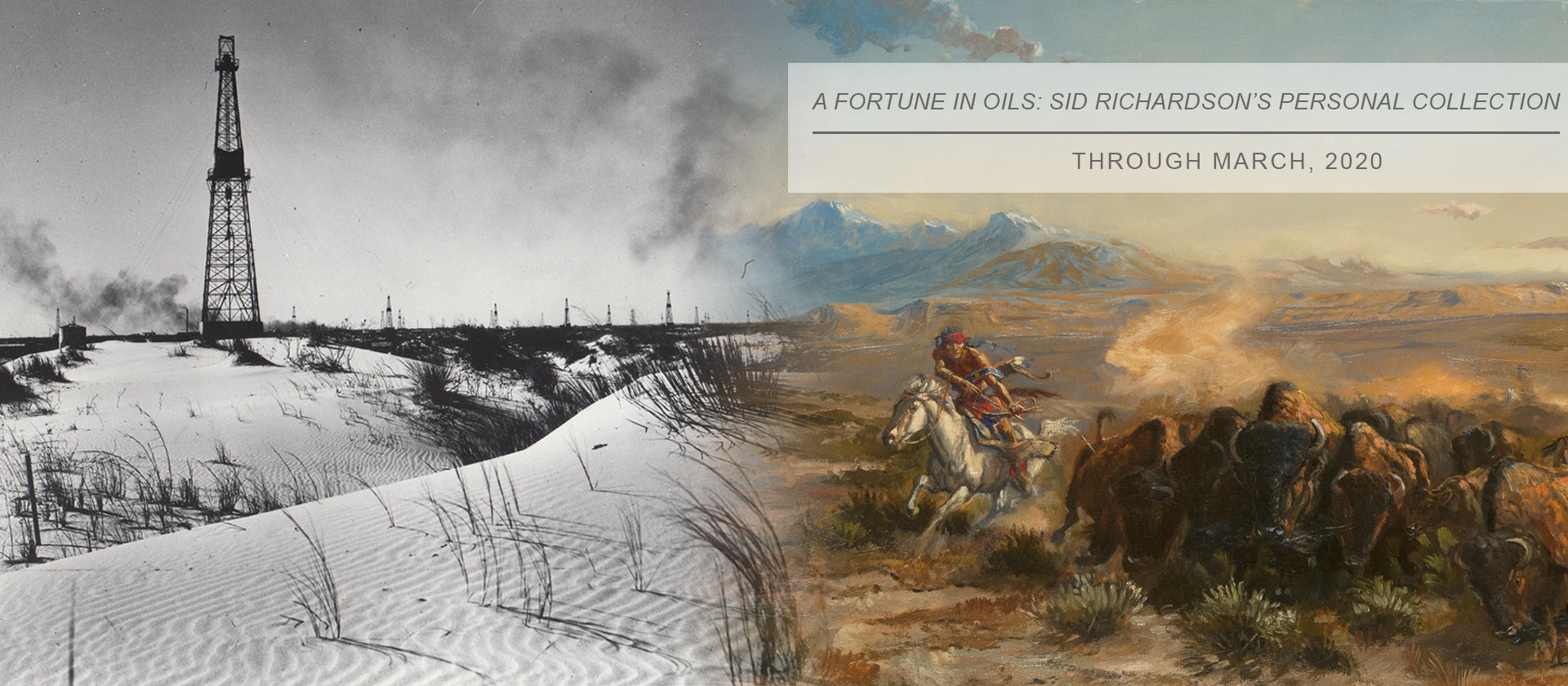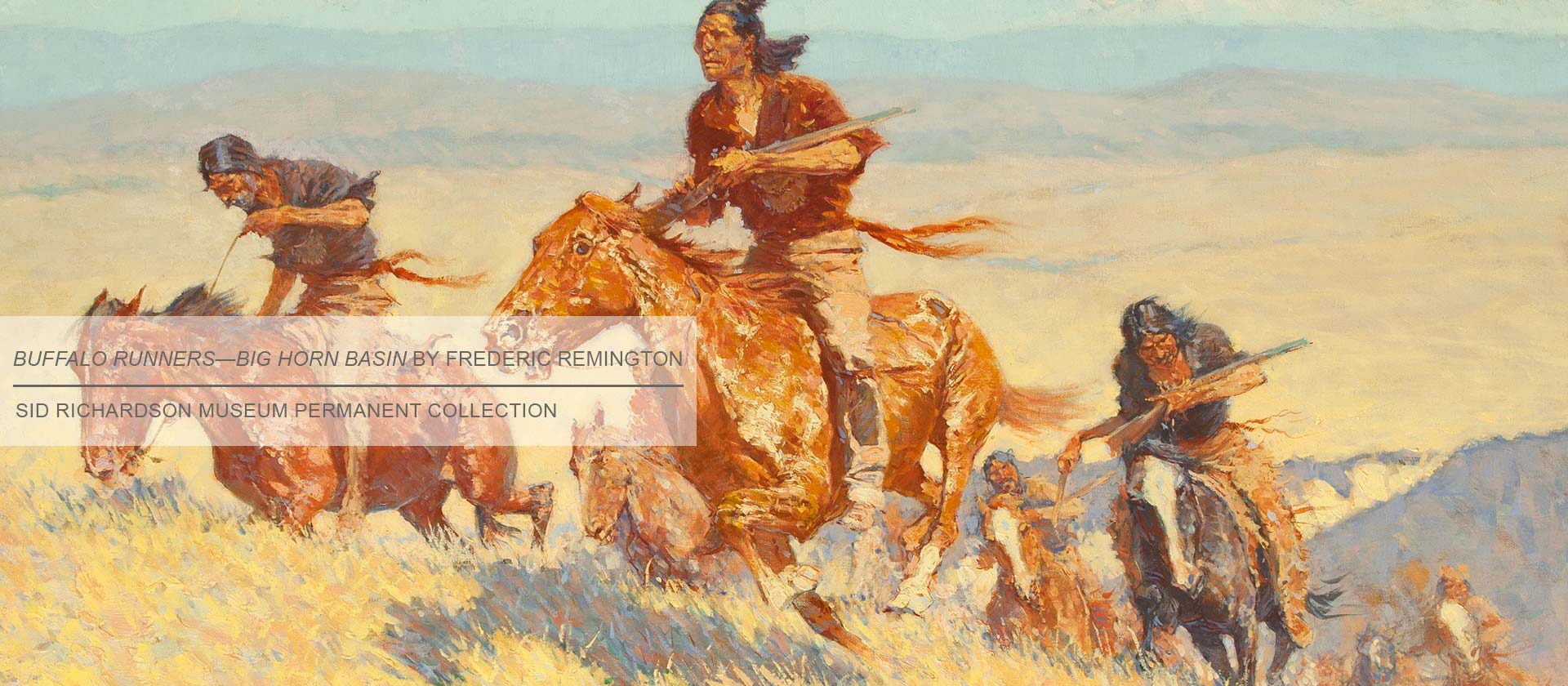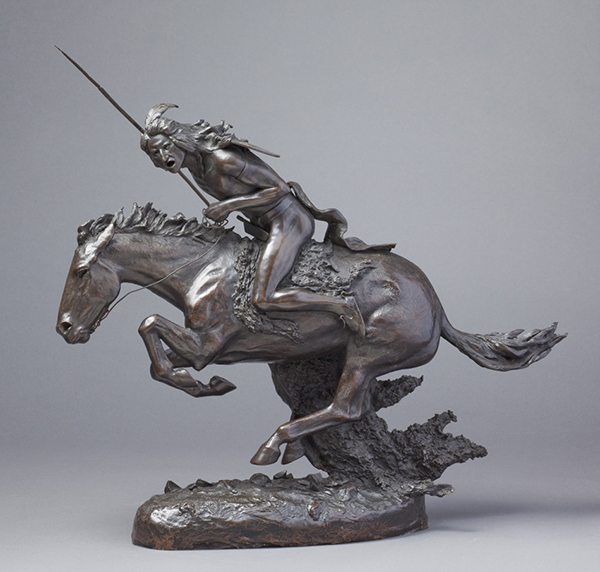

Violent Motion: Frederic Remington's Artistry in Bronze II
Eleven rarely seen bronze sculptures by Frederic Remington are featured in a special exhibition honoring our 30th anniversary. Mary Burke, Director of the Museum, explains that "Frederic Remington created 22 of the most memorable bronzes of any American sculptor of his time. He was the first American artist to depict such vitality in equestrian statues."
Phase 2 includes four additional sculptures: The Outlaw from a private collection, The Mountain Man from the Amon Carter Museum of American Art, and an additional cast of The Norther and The Cheyenne, both from private collections.
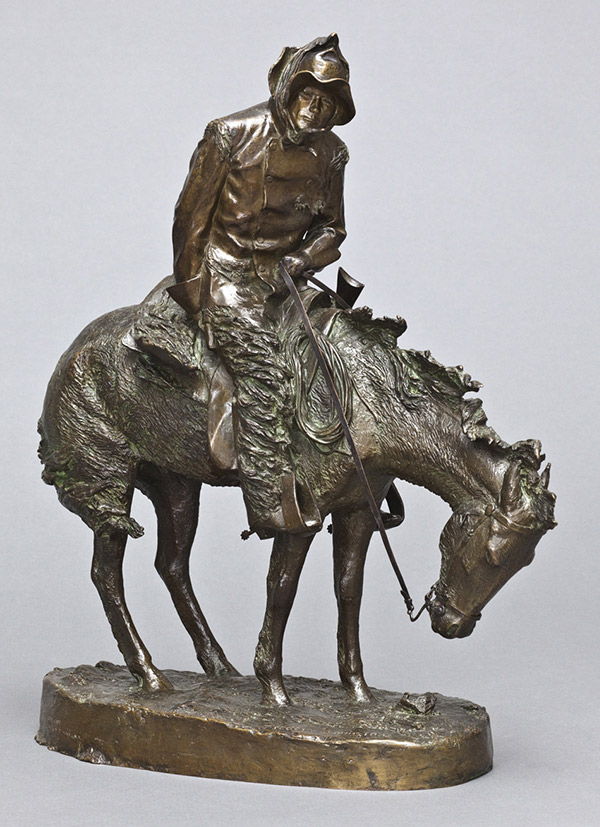
Ten of the eleven sculptures are on loan from rarely seen private collections, and one is from the Amon Carter Museum of American Art. They are paired with his paintings from the Sid Richardson Museum and the Carter Museum to demonstrate how Remington's artworks reveal action in a two-dimensional versus a three-dimensional medium.
This focused exhibition unites paintings from the collections of Sid Richardson and of his close friend, legendary Fort Worth newspaper publisher Amon G. Carter Sr. (1879–1955). The collaboration is symbolic of their friendship. Carter collected Remingtons and Russells and encouraged Richardson to pursue his love of collecting Western paintings. Richardson once said, “Anybody can paint a horse on four legs, but it takes a real eye to paint them in violent motion. All parts of the horse must be in proper position, and Remington and Russell are the fellows who can do it.”
Dr. Rick Stewart, one of the nation’s leading authorities on Remington, curated the exhibition. Prior to his retirement, Stewart was director and then chief curator of the Amon Carter Museum.
